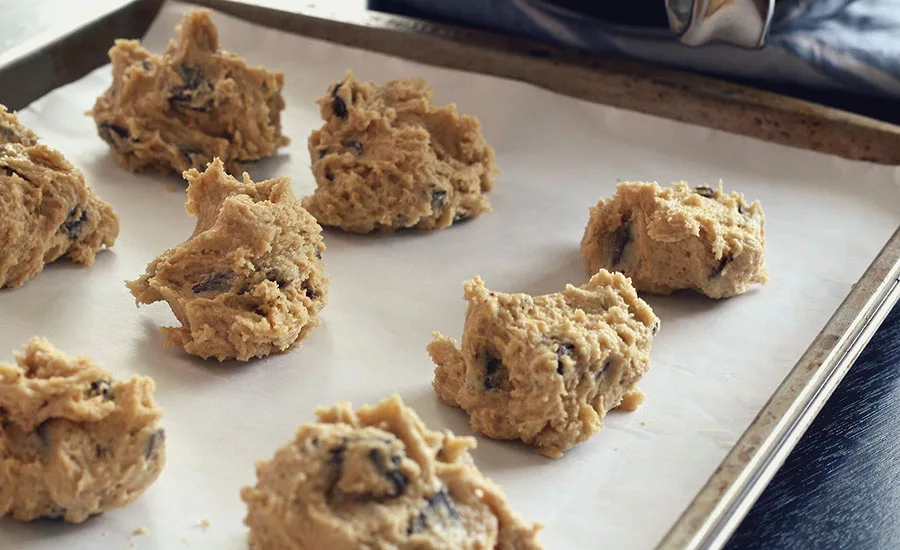Effect of Baking Temperature on Salmonella in Cookie Dough

A new study looked at the commercial baking process in controlling Salmonella in hard and soft cookies, specifically whether baking is enough to kill the pathogen in the dough.
Cookie doughs were prepared using flour that was mist-inoculated with a 7-serotype Salmonella cocktail. Hard cookies were baked at 365 °F (185 °C) for 16 min, and soft cookies were baked at 330 °F (165.6 °C) for 22 min, followed by 30 min of ambient air cooling for each type of cookie. D-values of the Salmonella cocktail in cookie doughs were determined using thermal-death-time disks.
Salmonella populations were proven to decrease by > 5 log CFU/g in hard and soft cookies at 11.5 and 20.5 min of baking, respectively. Salmonella was not detected in hard cookies at the end of baking (as determined by enrichment), whereas in soft cookies, 0.6 log CFU/g Salmonella was present at the end of baking and cooling.
Salmonella D-values in hard cookie dough at 60 °C, 65 °C, and 70 °C were 59.6 min, 28.1 min, and 11.9 min, respectively; while in soft cookie dough they were 62.3 min, 28.6 min, and 14.4 min, respectively. The Salmonella z-values in hard and soft cookie doughs were 14.5 °C and 15.8 °C, respectively.
Read the full study here.
Looking for quick answers on food safety topics?
Try Ask FSM, our new smart AI search tool.
Ask FSM →







